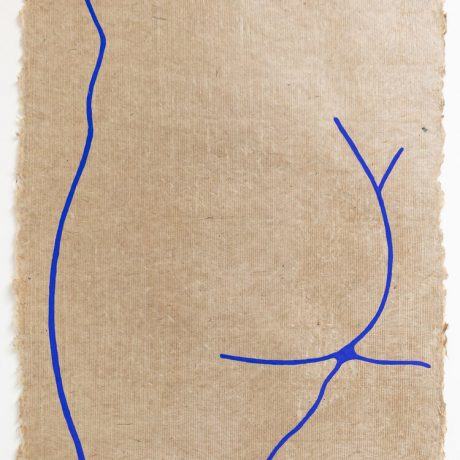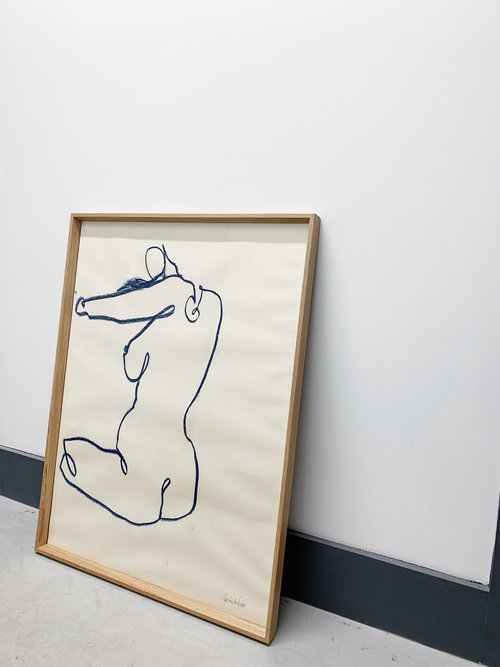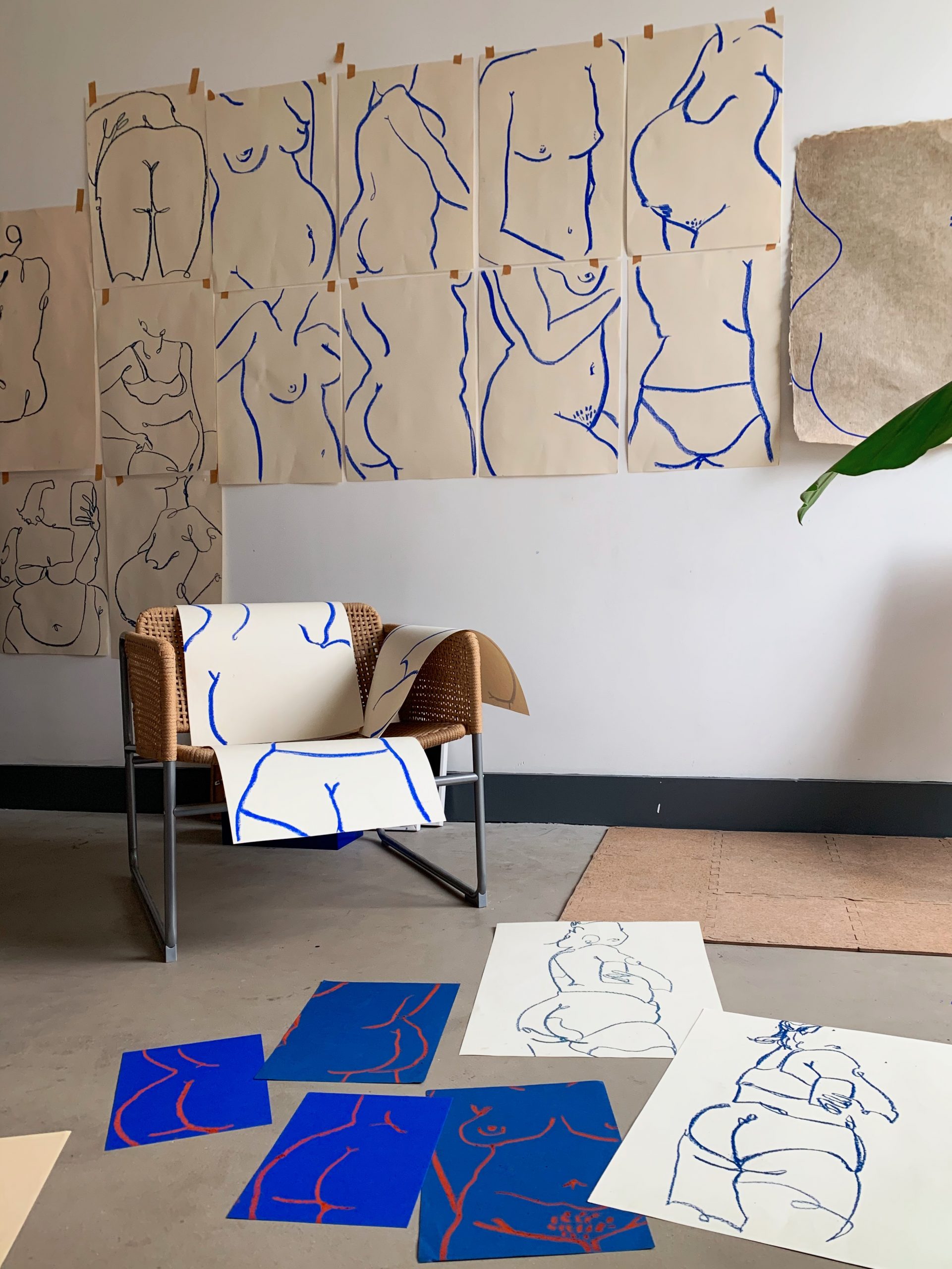
Things happen during precious snatched moments for mothers of young children (this I know). And sometimes the children interrupt those things, perhaps when eager little fingers smash keys and press send before you’re done, as Laxmi Hussain’s youngest did during our conversation over email. The apparent impossibility of being an accomplished artist and a mother is often tortured over. Less frequently is parenthood, and particularly motherhood, seen as an experience so immense that it could actually inspire someone to become an artist in the first place, and might even be, in many ways, a profession that is perfectly harmonious with the demands of raising a child.
Widely appreciated for her hypnotic, blue, minimalist lines (ultramarine has become her signature) and the welcoming, non-judgemental space she creates through her work, Hussain’s artistic practice was rekindled after the birth of her first child. The physical and emotional forms that motherhood takes continue to inspire her, observing her three children, the way they see the world, her body and its changes through pregnancy and postpartum, and the manner in which becoming a parent shifts your perspective, both inwards and outwards.
Hussain is leading a one-day Online Zoom Workshop, Shapes and Vessels with Laxmi, on Saturday August 21st, 10.30am – 3pm (BST) with Elephant Academy, supported by Winsor & Newton.
How, when and why did you decide to become an artist? And how was the journey to where you are now?
My degree was in architecture, and although I really loved my course I’ve never been able to suppress the artist in me. When I graduated, I knew I didn’t wish to become an architect, but I didn’t know what I wanted to do: being an artist seemed like one of those dreams that someone from my background doesn’t really get to pursue. I’m a first-generation Londoner, and so both my parents came here and worked very hard to look after our family and support family members back home, Naturally my parents wanted us to pursue professional careers in the hope that we would be better off financially.
After university, I fell into an office job, but when my eldest was born I became fascinated by his love for drawing, which in turn re-ignited my passion. We kept drawing and I started to find real passion in the work I was producing. It took a lot of work and I was still working full time until 10 months ago, right before I had my youngest baby: it has grown to give me the opportunity to support my family. I never could have dreamt this would ever happen.
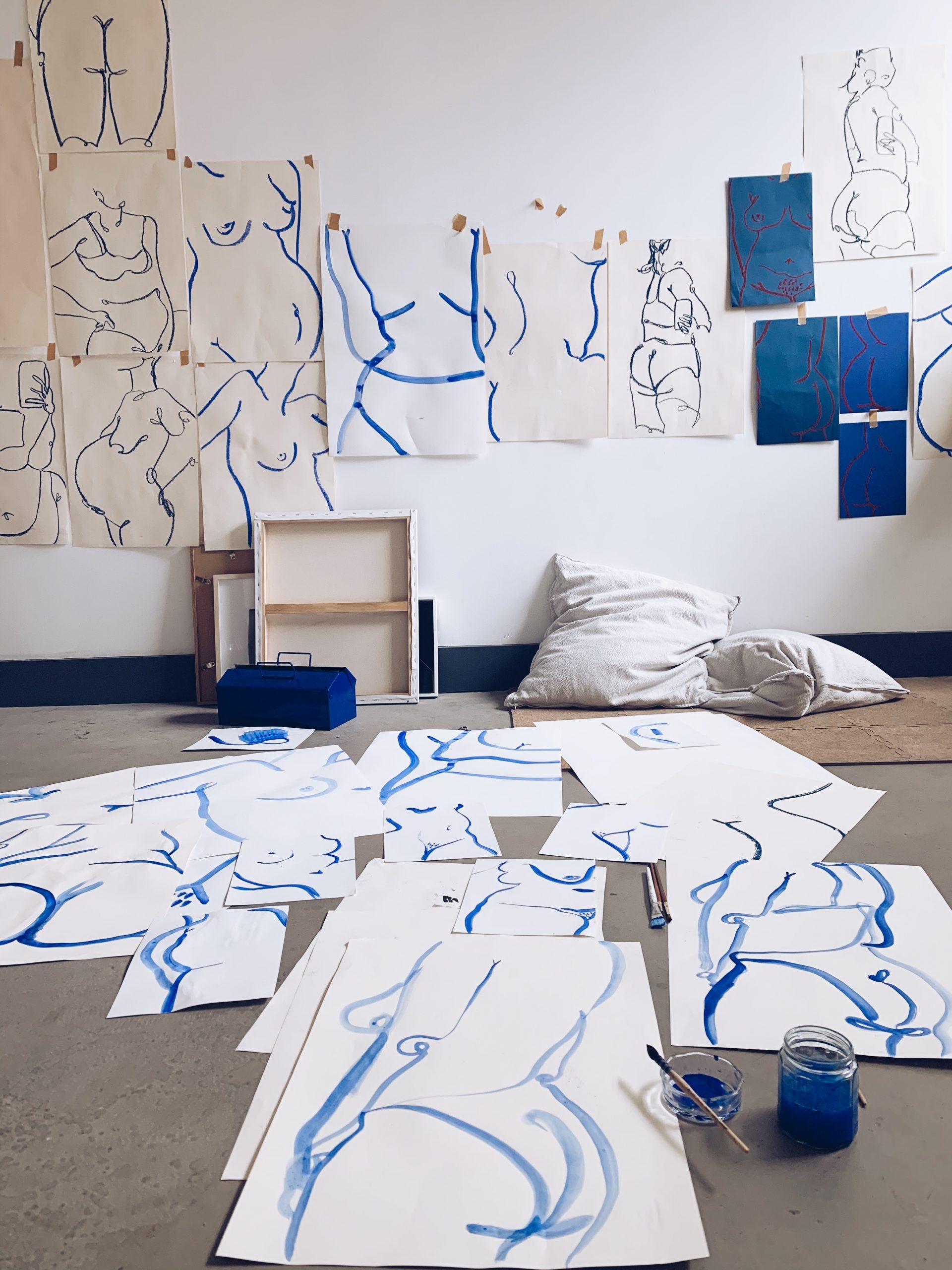
One of your trademarks is your use of the colour blue. What shade is it, when did you start using it, and what is it that keeps you using it in your work?
I love ultramarine blue—I started really using this about two years ago, but have been working in varying shades of blue for years. I started using it really heavily around 2017 which coincided with my late mother falling ill with blood cancer, it seemed to peak at this point. I took on a small space in a big, beautiful shared studio and I would fly there between hospital journeys to find some calm, and blue seemed to help fuel some peace in me. It wasn’t until close to or just after my mother’s death that I realised that in so many memories and photos she is wearing blue. I think that is why I continue to be obsessed with it today.
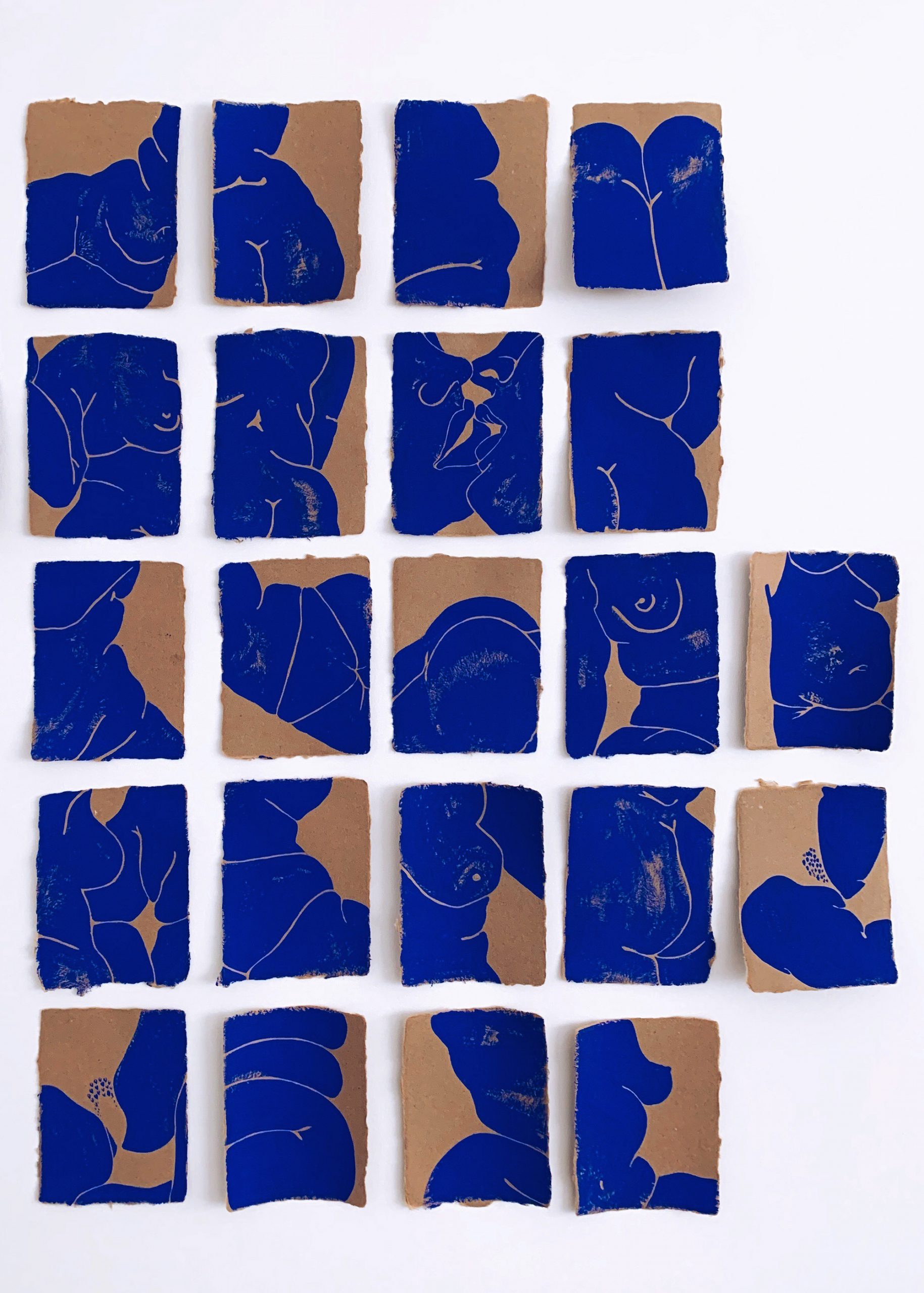
“The mothering body is truly special to me so I’ve been documenting it, learning it and honouring it”
You also work a lot with the female figure, particularly the nude female figure, as well as the pregnant body, the mothering body. Are there are difficulties in working with this as a subject? I often feel it’s the most difficult topic to deal with in art, as there’s such a long history of the male gaze on it. We are so oversaturated with these images through the prism of the patriarchy…
It’s exactly that, for years I’d seen my own body through this prism, not thin enough, too lumpy, too many marks, you have stretch marks…and I continually compared myself to other women. Women don’t need this. I needed to change this for myself and it took a really long time—looking back on my older work I can see my gaze doesn’t fully shift until some time after I started this.
The thing about a mothering body is it is constantly adjusting, through the different stages of pregnancy to postpartum. I’ve been at a point in my life where I’ve been able to marvel at it over my most previous pregnancy, and now, just over nine months after birth, my body is still adjusting as I continue to feed my baby. It’s truly special to me so I’ve been documenting it, learning it and honouring it by painting and drawing it. In doing this I’ve been able to break my perception of my body.
It means my work is deeply personal to me, but that’s exactly what I use art for: it’s my journey that I share. Hopefully it’ll go on to change other women’s thoughts on their own bodies too.
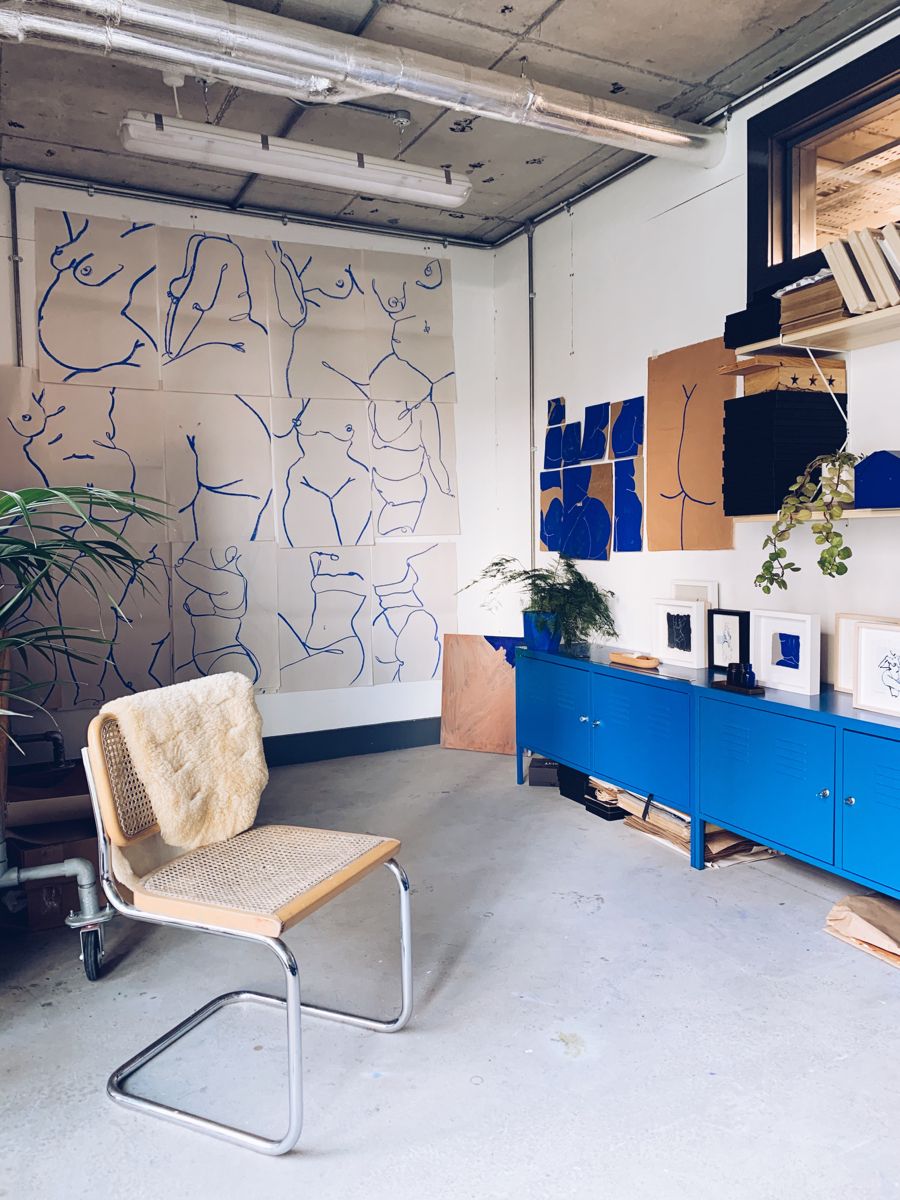
You have three kids, and your work about the subject is celebrated. What are your thoughts on the artist and motherhood debate?
Honestly, I don’t think I’d be an artist if it weren’t for motherhood. Yes there are times when I want to work on things, and little hands do what little hands do, but motherhood taught me that the fear of doing what you want is nothing compared to the fears you have being a mother and nurturing your children. It’s taught me to just go for it. My older kids are big artists in their own right, and my studio works in that it’s a creative space for us all and I’m so grateful.
I’ve been getting them involved in exploring art since they were babies, I’m fascinated by the way kids see things and create art in that fashion, it informs my process in a big way. However, that’s not to say there haven’t been times where I’ve had less time to complete works because of my role as a mother, and that is sometimes frustrating. But if it wasn’t the kids, it could just as well be something else taking up time, that’s just life isn’t it? There are many incredible mothers and artists out there. I sometimes find that we can be defined by motherhood, but we are all proof that it can be incredibly enriching to our process.
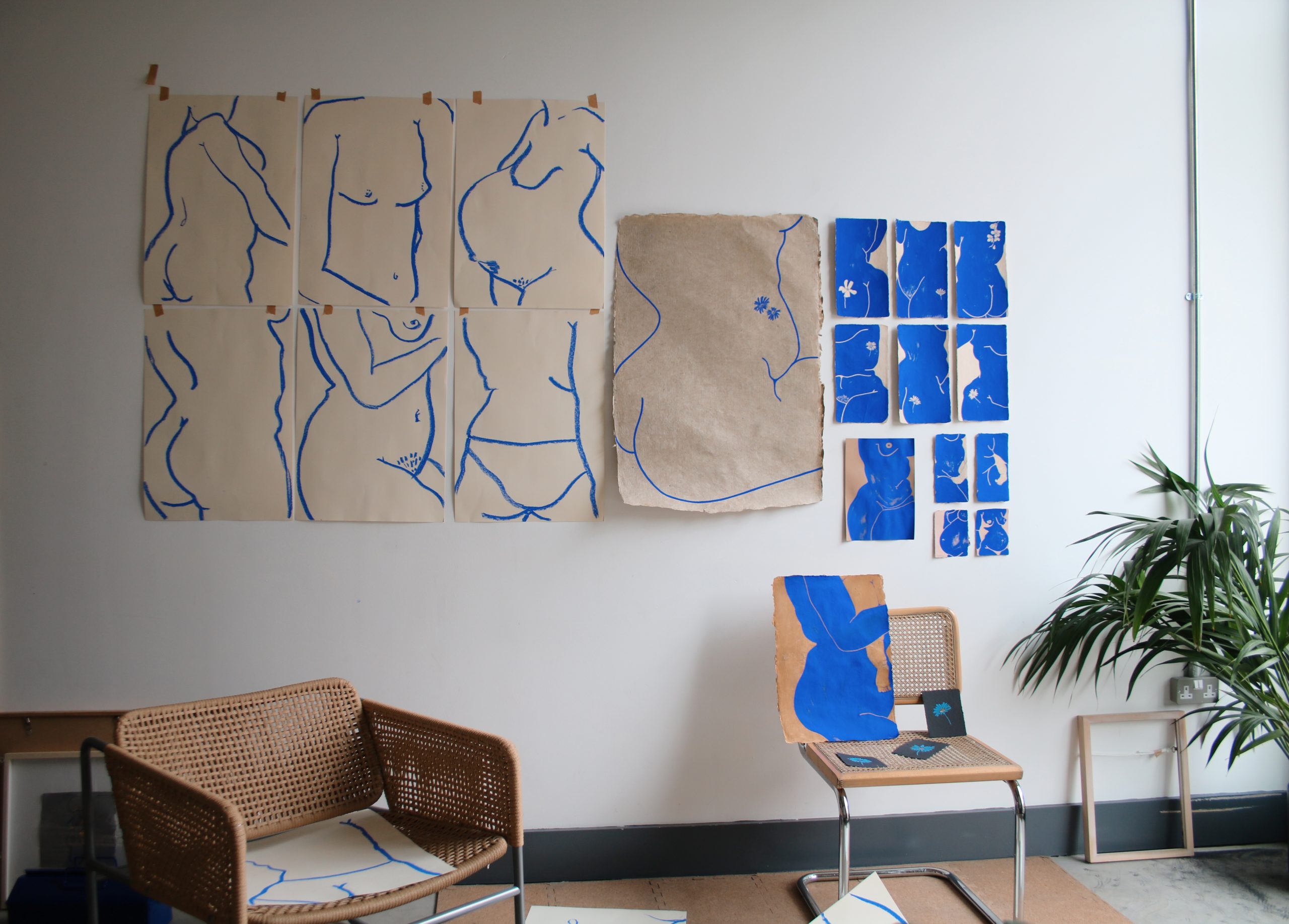
What is the purpose of art for you? What do you hope your art can do for someone?
Art is a part of me, I’ve been drawing since I was a child, I think it’s more natural in people than we feel and that everyone should use it more often. Mark making comes before writing, it’s intrinsic. I hope that my art inspires a change of thought: I focus on the body and aspects of it we wouldn’t normally appreciate, see or love. I just want us to see the body through a normal lens: we are all different, we all function differently, but we’re all incredible, we do unique things, we bring different things to the table. There should be space for us all to be seen and appreciated.
What do your kids think of your work?
I think that now my eldest is getting to be a pre-teen he’s not that interested in my work specifically because he’s too busy engaging in things his age, but my daughter, who’s seven, loves my work. She even copies the pieces she really likes when she comes to the studio and has a section of wall where she pins all her drawings. I’ve always been very open with them about my body and that makes the topic of the body a very natural thing in our household, and I hope that continues.
Shapes and Vessels with Laxmi
Saturday August 21st, 10.30am – 3pm (BST), Online Zoom Workshop
FIND OUT MORE